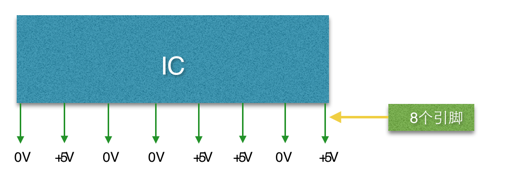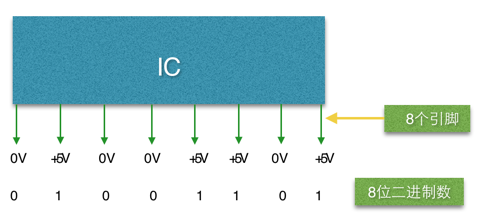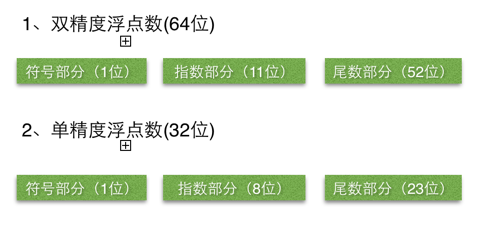Why can't js handle decimal operations correctly? _javascript skills
var sum = 0;
for(var i = 0; i < 10; i++) {
sum += 0.1;
}
console.log(sum);
Will the above program output 1?
In the article 25 JavaScript interview questions you need to know , the 8th question briefly explains why js cannot handle decimal operations correctly. Today I will revisit an old topic and analyze this issue in a deeper way.
But first of all, it should be noted that the inability to correctly handle decimal operations is not a design error of the JavaScript language itself. Other high-level programming languages, such as C, Java, etc., are also unable to correctly handle decimal operations:
#include <stdio.h>
void main(){
float sum;
int i;
sum = 0;
for(i = 0; i < 100; i++) {
sum += 0.1;
}
printf('%f\n', sum); //10.000002
}
Representation of numbers inside the computer
We all know that programs written in high-level programming languages need to be converted into machine language that can be recognized by the CPU (Central Processing Unit) through interpretation, compilation and other operations before they can be run. However, the CPU does not recognize the decimal and decimal systems of numbers. Octal and hexadecimal, etc., these base numbers we declare in the program will be converted into binary numbers for calculation.
Why not convert it into ternary numbers for calculation?
The inside of a computer is made up of many electronic components such as IC (Integrated Circuit: Integrated Circuit). It looks like this:

ICs come in many shapes, with many pins arranged side by side on both sides or inside them (only one side is shown in the picture). All pins of the IC have only two states of DC voltage 0V or 5V, that is, one IC pin can only represent two states. This characteristic of IC determines that the data inside the computer can only be processed with binary numbers.
Since 1 bit (one pin) can only represent two states, the binary calculation method becomes 0, 1, 10, 11, 100... This form:

So, in number operations, all operands will be converted into binary numbers to participate in the operation, such as 39, will be converted into binary 00100111
Binary representation of decimals
As mentioned above, the data in the program will be converted into binary numbers. When decimals are involved in operations, they will also be converted into binary numbers. For example, decimal 11.1875 will be converted into 1101.0010.
The numerical range expressed by 4 digits after the decimal point as a binary number is 0.0000~0.1111. Therefore, this can only represent the combination (addition) of the four decimal numbers 0.5, 0.25, 0.125, 0.0625 and the bit weights after the decimal point. Decimal:

As can be seen from the above table, the next digit of decimal number 0 is 0.0625. Therefore, decimals between 0 and 0.0625 cannot be represented by binary numbers with 4 digits after the decimal point; if you increase the binary number after the decimal point, The number of corresponding decimal digits will also increase, but no matter how many digits are added, the result of 0.1 cannot be obtained. In fact, 0.1 converted to binary is 0.00110011001100110011... Note that 0011 is repeated infinitely:
console.log(0.2+0.1); //操作数的二进制表示 0.1 => 0.0001 1001 1001 1001…(无限循环) 0.2 => 0.0011 0011 0011 0011…(无限循环)
The Number type of js is not divided into integer, single precision, double precision, etc. like C/Java, but is uniformly expressed as a double precision floating point type. According to IEEE regulations, single-precision floating-point numbers use 32 bits to represent all decimals, while double-precision floating-point numbers use 64 bits to represent all decimals. Floating-point numbers are composed of sign, mantissa, exponent and base, so not all digits are used. To represent decimals, symbols, exponents, etc. must also occupy digits, and the base does not occupy digits:

The decimal part of a double-precision floating point number supports up to 52 digits, so after adding the two, you get a string of 0.0100110011001100110011001100110011001100...a binary number that is truncated due to the limitation of the decimal place of the floating point number. At this time, convert it to decimal, That becomes 0.30000000000000004.
Summary
js cannot handle decimal operations correctly, including other high-level programming languages. This is not a design error of the language itself, but the computer itself cannot handle decimal operations correctly. Operations on decimals often produce unexpected results. Because not all decimal fractions can be represented in binary.
The above is the entire content of this article, I hope it will be helpful to everyone’s study.

Hot AI Tools

Undresser.AI Undress
AI-powered app for creating realistic nude photos

AI Clothes Remover
Online AI tool for removing clothes from photos.

Undress AI Tool
Undress images for free

Clothoff.io
AI clothes remover

AI Hentai Generator
Generate AI Hentai for free.

Hot Article

Hot Tools

Notepad++7.3.1
Easy-to-use and free code editor

SublimeText3 Chinese version
Chinese version, very easy to use

Zend Studio 13.0.1
Powerful PHP integrated development environment

Dreamweaver CS6
Visual web development tools

SublimeText3 Mac version
God-level code editing software (SublimeText3)

Hot Topics
 1384
1384
 52
52
 How to use JS and Baidu Maps to implement map pan function
Nov 21, 2023 am 10:00 AM
How to use JS and Baidu Maps to implement map pan function
Nov 21, 2023 am 10:00 AM
How to use JS and Baidu Map to implement map pan function Baidu Map is a widely used map service platform, which is often used in web development to display geographical information, positioning and other functions. This article will introduce how to use JS and Baidu Map API to implement the map pan function, and provide specific code examples. 1. Preparation Before using Baidu Map API, you first need to apply for a developer account on Baidu Map Open Platform (http://lbsyun.baidu.com/) and create an application. Creation completed
 Recommended: Excellent JS open source face detection and recognition project
Apr 03, 2024 am 11:55 AM
Recommended: Excellent JS open source face detection and recognition project
Apr 03, 2024 am 11:55 AM
Face detection and recognition technology is already a relatively mature and widely used technology. Currently, the most widely used Internet application language is JS. Implementing face detection and recognition on the Web front-end has advantages and disadvantages compared to back-end face recognition. Advantages include reducing network interaction and real-time recognition, which greatly shortens user waiting time and improves user experience; disadvantages include: being limited by model size, the accuracy is also limited. How to use js to implement face detection on the web? In order to implement face recognition on the Web, you need to be familiar with related programming languages and technologies, such as JavaScript, HTML, CSS, WebRTC, etc. At the same time, you also need to master relevant computer vision and artificial intelligence technologies. It is worth noting that due to the design of the Web side
 Essential tools for stock analysis: Learn the steps to draw candle charts with PHP and JS
Dec 17, 2023 pm 06:55 PM
Essential tools for stock analysis: Learn the steps to draw candle charts with PHP and JS
Dec 17, 2023 pm 06:55 PM
Essential tools for stock analysis: Learn the steps to draw candle charts in PHP and JS. Specific code examples are required. With the rapid development of the Internet and technology, stock trading has become one of the important ways for many investors. Stock analysis is an important part of investor decision-making, and candle charts are widely used in technical analysis. Learning how to draw candle charts using PHP and JS will provide investors with more intuitive information to help them make better decisions. A candlestick chart is a technical chart that displays stock prices in the form of candlesticks. It shows the stock price
 How to create a stock candlestick chart using PHP and JS
Dec 17, 2023 am 08:08 AM
How to create a stock candlestick chart using PHP and JS
Dec 17, 2023 am 08:08 AM
How to use PHP and JS to create a stock candle chart. A stock candle chart is a common technical analysis graphic in the stock market. It helps investors understand stocks more intuitively by drawing data such as the opening price, closing price, highest price and lowest price of the stock. price fluctuations. This article will teach you how to create stock candle charts using PHP and JS, with specific code examples. 1. Preparation Before starting, we need to prepare the following environment: 1. A server running PHP 2. A browser that supports HTML5 and Canvas 3
 How to use JS and Baidu Maps to implement map heat map function
Nov 21, 2023 am 09:33 AM
How to use JS and Baidu Maps to implement map heat map function
Nov 21, 2023 am 09:33 AM
How to use JS and Baidu Maps to implement the map heat map function Introduction: With the rapid development of the Internet and mobile devices, maps have become a common application scenario. As a visual display method, heat maps can help us understand the distribution of data more intuitively. This article will introduce how to use JS and Baidu Map API to implement the map heat map function, and provide specific code examples. Preparation work: Before starting, you need to prepare the following items: a Baidu developer account, create an application, and obtain the corresponding AP
 How to use JS and Baidu Map to implement map click event processing function
Nov 21, 2023 am 11:11 AM
How to use JS and Baidu Map to implement map click event processing function
Nov 21, 2023 am 11:11 AM
Overview of how to use JS and Baidu Maps to implement map click event processing: In web development, it is often necessary to use map functions to display geographical location and geographical information. Click event processing on the map is a commonly used and important part of the map function. This article will introduce how to use JS and Baidu Map API to implement the click event processing function of the map, and give specific code examples. Steps: Import the API file of Baidu Map. First, import the file of Baidu Map API in the HTML file. This can be achieved through the following code:
 PHP and JS Development Tips: Master the Method of Drawing Stock Candle Charts
Dec 18, 2023 pm 03:39 PM
PHP and JS Development Tips: Master the Method of Drawing Stock Candle Charts
Dec 18, 2023 pm 03:39 PM
With the rapid development of Internet finance, stock investment has become the choice of more and more people. In stock trading, candle charts are a commonly used technical analysis method. It can show the changing trend of stock prices and help investors make more accurate decisions. This article will introduce the development skills of PHP and JS, lead readers to understand how to draw stock candle charts, and provide specific code examples. 1. Understanding Stock Candle Charts Before introducing how to draw stock candle charts, we first need to understand what a candle chart is. Candlestick charts were developed by the Japanese
 How to use JS and Baidu Maps to implement map polygon drawing function
Nov 21, 2023 am 10:53 AM
How to use JS and Baidu Maps to implement map polygon drawing function
Nov 21, 2023 am 10:53 AM
How to use JS and Baidu Maps to implement map polygon drawing function. In modern web development, map applications have become one of the common functions. Drawing polygons on the map can help us mark specific areas for users to view and analyze. This article will introduce how to use JS and Baidu Map API to implement map polygon drawing function, and provide specific code examples. First, we need to introduce Baidu Map API. You can use the following code to import the JavaScript of Baidu Map API in an HTML file




